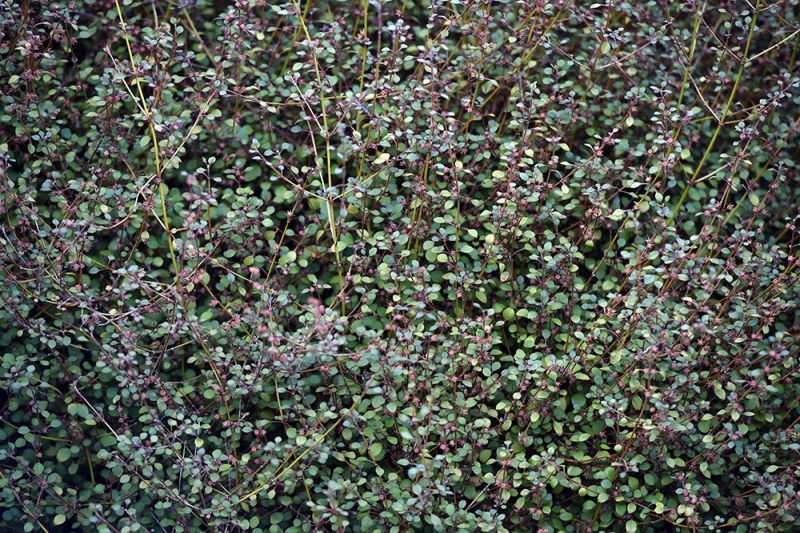A Home-Grown Oddity to be Proud Of
This article was first published on 27 Mar 2020.

Teucrium parvifolium
Photo by the Otago Daily Times
If you are a native gardener who is drawn to unusual plant forms, you might be familiar with some of Dunedin Botanic Garden’s wonderful “divaricating” shrubs. These plants all share a quirky growth form: dense masses of interlacing stems with very small leaves. They look more or less like big, springy cushions.
Divaricating shrubs have real garden merit. They are unusual-looking, appeal to wildlife, pruneable, and versatile. Many can work in small spaces, or in dry or difficult soils. They add structure, texture and ‘zing’ to a planting. And while all have some traits in common, they are far from a homogenous mass of nondescript twiggy things. There are at least 60 species of New Zealand divaricates, from many different plant families. Each has its own unique growth habit, colouring, flowers and fruit. Here are a just a few:
Coprosma virescens – Narrow, billowing clouds of slender, orange-red stems with thin, spoon-shaped leaves.
Myrsine divaricata – An elegant, slow-growing shrub with heart shaped leaves, violet berries, and gently weeping branches.
Teucrium parvifolium (pictured) – A rarity, seldom encountered in the wild. It forms a compact blob, the colour of old gold. Its square stems give it away as a member of the mint family.
Pennantia corymbosa – kaikomako. The dense, glossy leaves are shaped like miniature ducks’ feet. The divaricating form occurs at the juvenile stage, then kaikomako develops into a more conventional tree. As an adult it produces an abundance of pretty white flowers, and shiny black fruit for the birds


